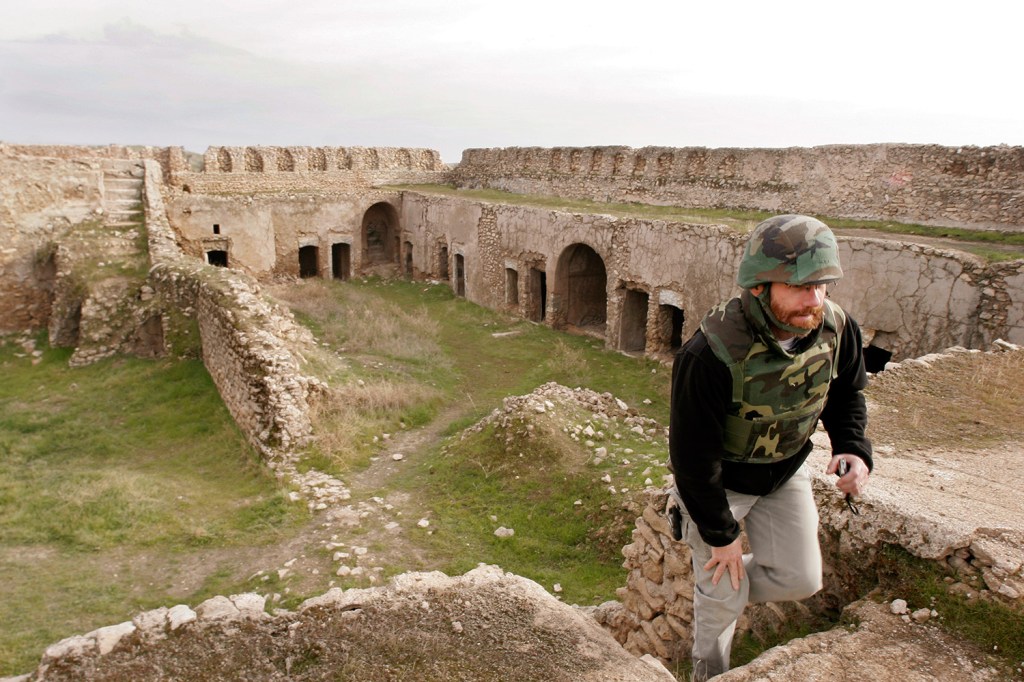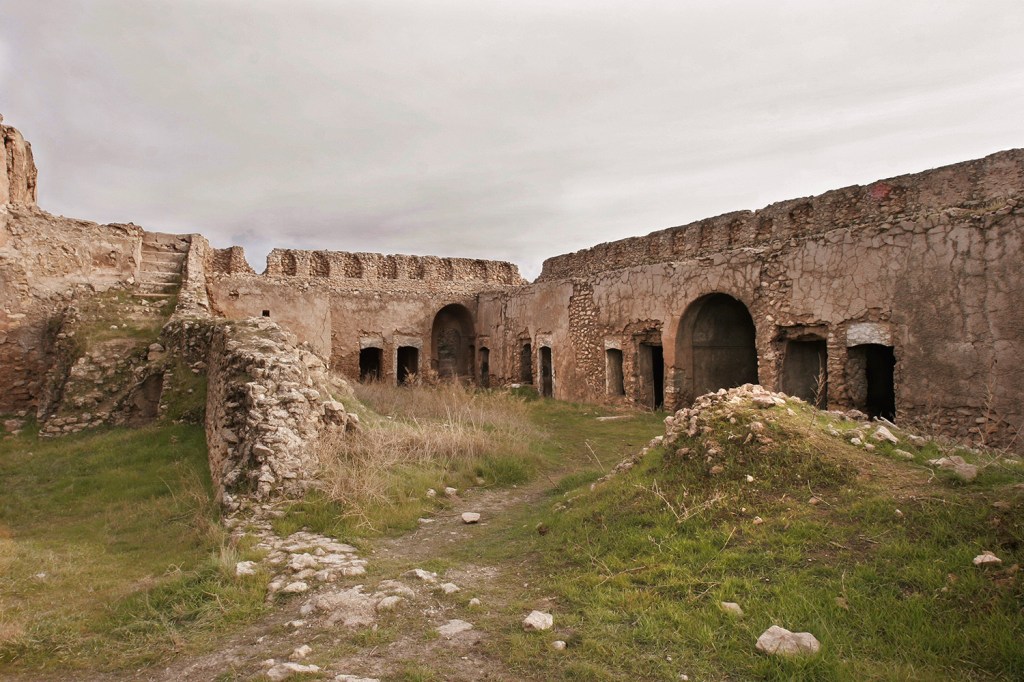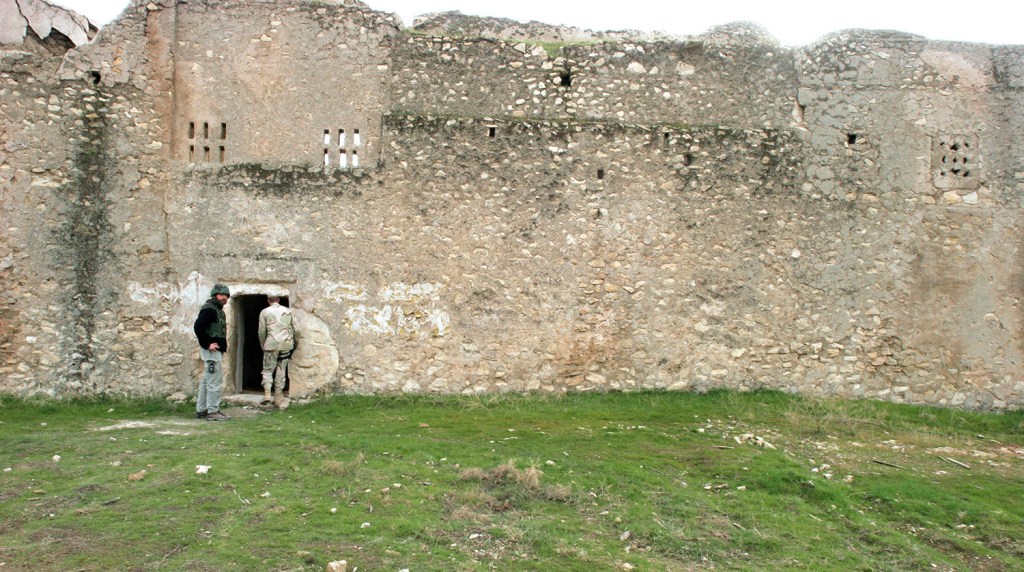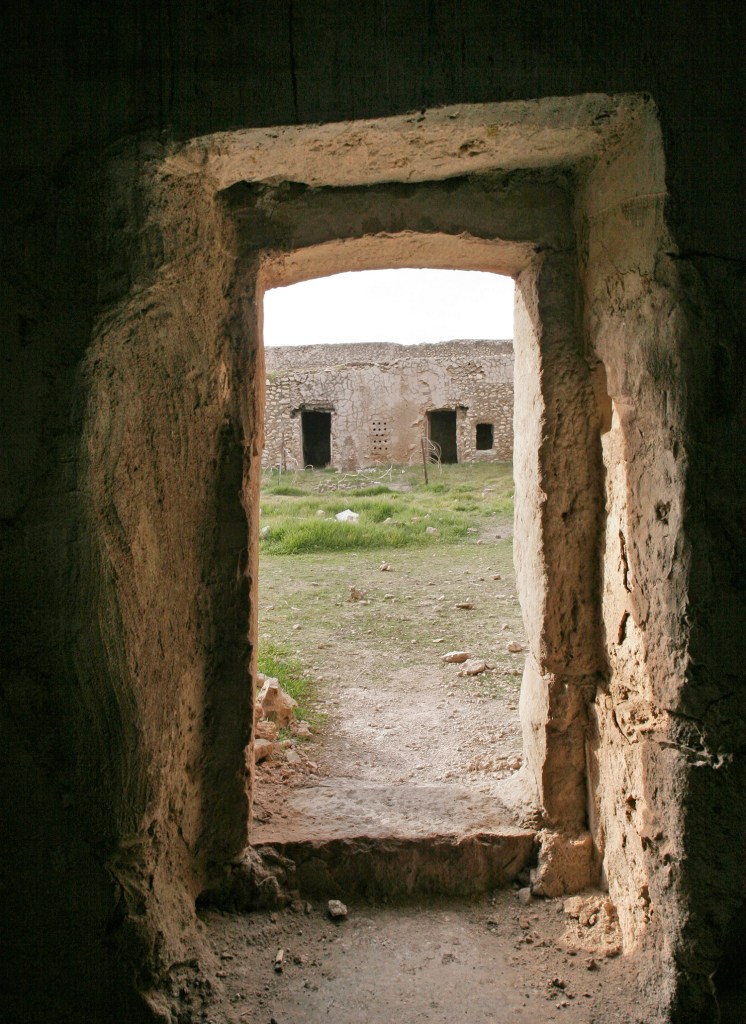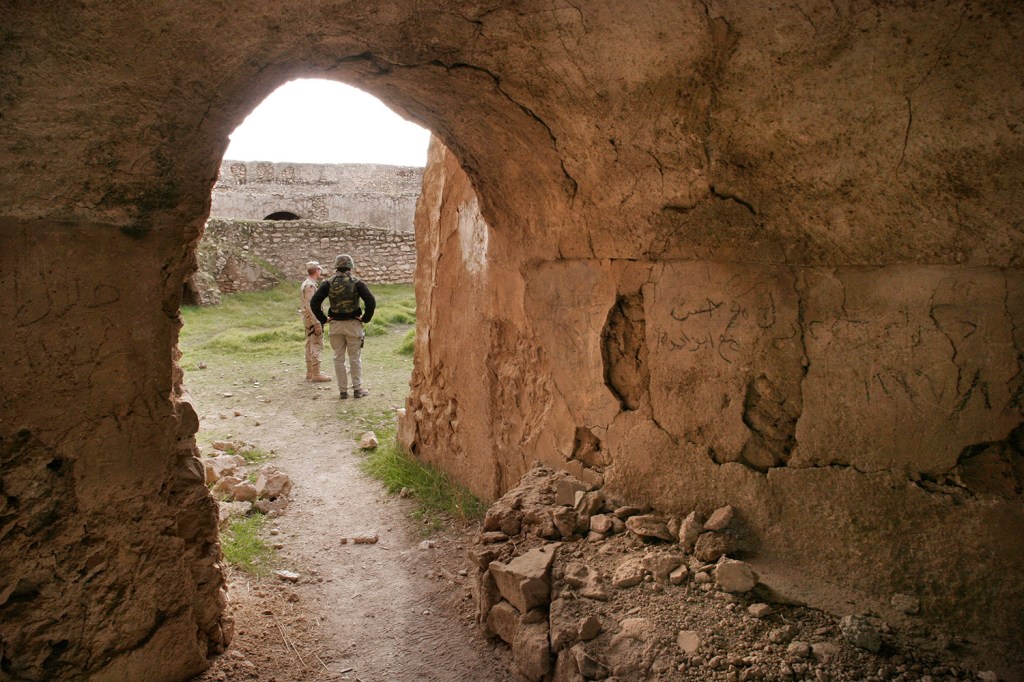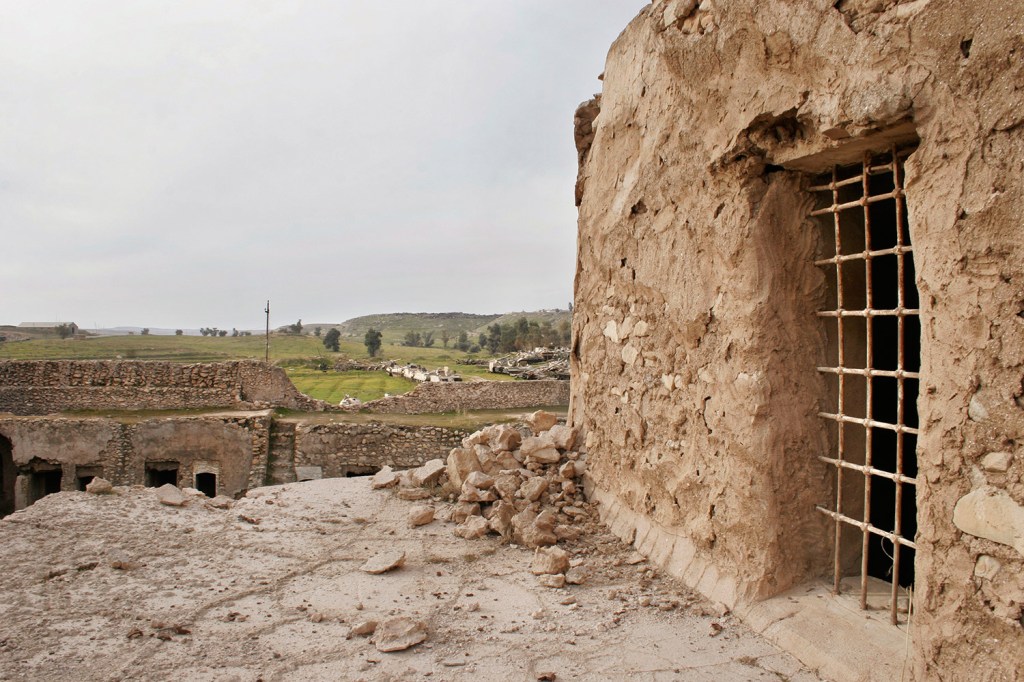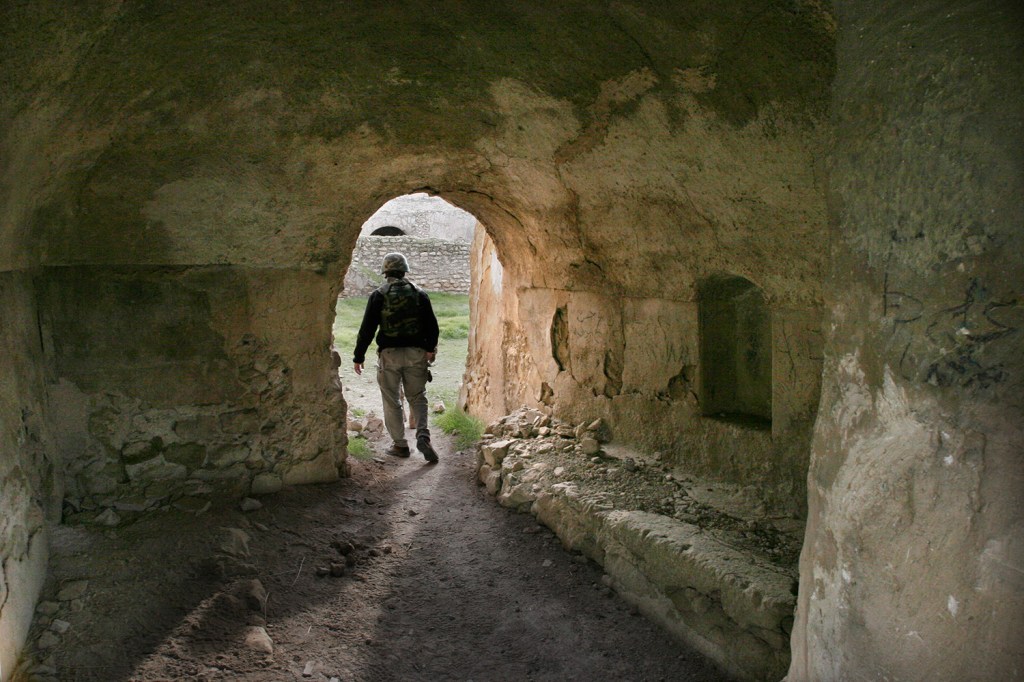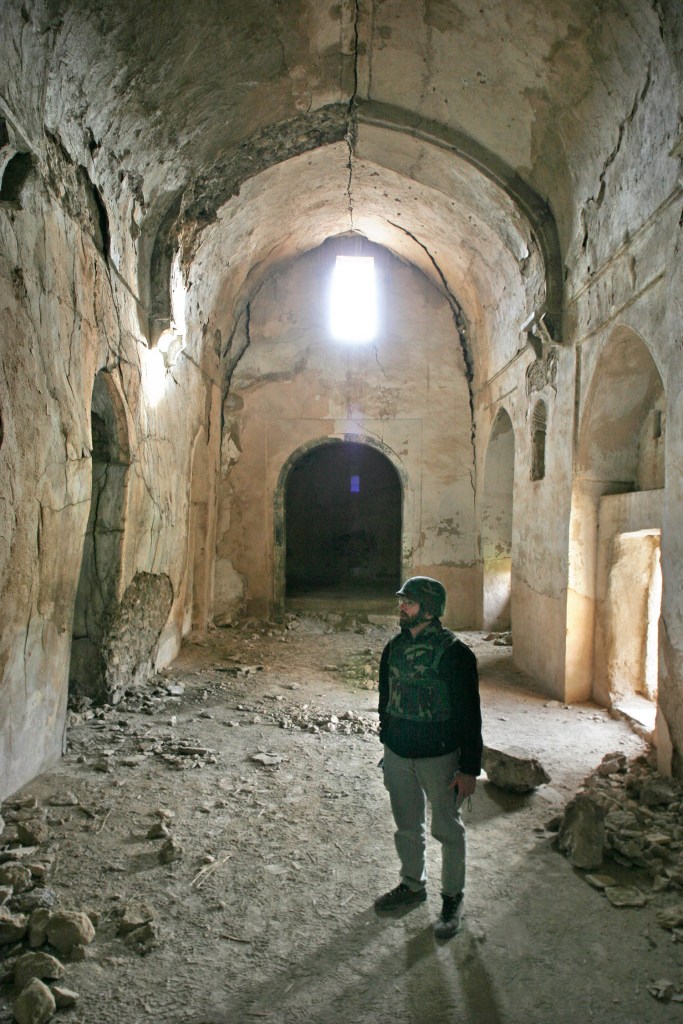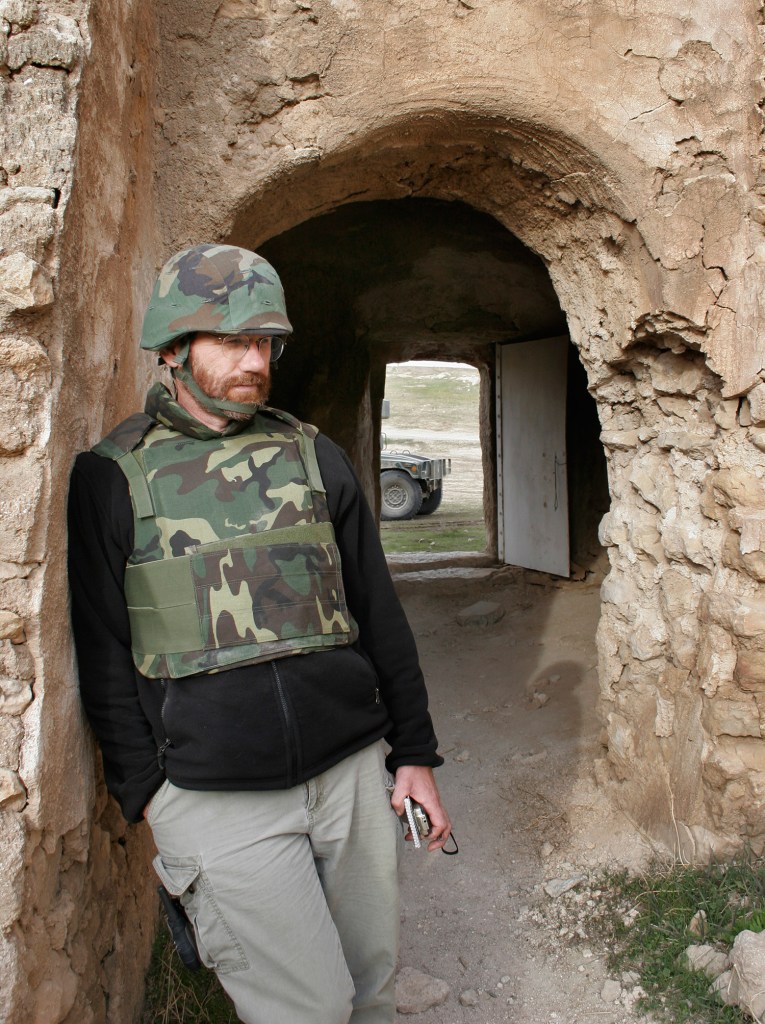For modern civilization, the news last week was shocking: Satellite imagery has confirmed that ISIS forces destroyed a 1,400-year-old monastery not long after they took over the city of Mosul in northern Iraq in June 2014.
But for a battalion of Maine soldiers who saw the pictures on TV, blinked, and looked again, this was personal.
“When I first looked at it, I said, ‘No, that can’t be,’ ” said Maj. (Ret.) David Sivret, who served back in 2004-2005 as chaplain for the Maine Army National Guard’s 133rd Engineer Battalion in Mosul. “And then I saw that in fact it was.”
It was called Dair Mar Elia, or St. Elijah’s Monastery. I first saw it in December 2004 while photographer Greg Rec and I were embedded with the 133rd at Forward Operating Base Marez on the outskirts of Mosul.
Then-Sgt. Dan Landers of Bangor, eager to show us the unseen reaches of the sprawling base, had commandeered a Humvee for the afternoon and told us to hop in.
A few minutes down the bumpy dirt road (Landers’ daily running route), we came upon the ancient compound of stone walls, a chapel, a sanctuary and two dozen other rooms.
To walk through them, down the same hallways once used by Chaldean Catholic monks in the late sixth century, was to travel back in time.
I remember commenting on how pristine it all seemed, especially given the immediate surroundings.
Just outside the monastery lay the “boneyard,” a ghostly collection of rusting Iraqi tanks and other military vehicles left over from the 2003 U.S. invasion and, before that, the war between Iraq and Iran.
Beyond that, the fields were still littered with unexploded ordnance – when a grass fire raced through earlier that year, soldiers from the 133rd had watched from their rooftops as mortars went off willy-nilly. “It was like fireworks out there for an entire day,” chortled Landers.
But the monastery, this tiny oasis of tranquility, looked like a national park. And credit for that, lo and behold, went directly to the soldiers from Maine.
Prior to the 133rd’s arrival in March 2004, Forward Operating Base Marez was home to the 101st Airborne Division, which took control of the area following the 2003 invasion.
Either those soldiers had no idea of the historical significance of the monastery ruins or they simply didn’t care, but before long the place looked more like an adolescent hangout than a centuries-old shrine.
Litter filled the courtyard. The 101st’s “screaming eagle” and other graffiti covered the stone walls. A medieval cistern was now a trash hopper.
Then one day on the other side of Mosul, a group of Chaldean Catholic religious leaders came knocking on the door of Task Force Olympia, the headquarters for all U.S. military operations across northern Iraq.
“They wanted to come visit the monastery. It was a very important site to them,” recalled Col. (Ret.) John Jansen of Manchester, who went to Iraq as commanding officer of the 133rd but ended up overseeing engineering operations for the entire task force. “So we went down to look at the site.”
Horrified at what they saw, Jansen and the other senior officers knew something had to be done – and fast – before they invited in the local clergy.
Enter the 133rd.
“It was a pretty hot mission,” recalled Jansen last week, referring to the high priority placed on getting the job done quickly and well. “And we took a lot of pride in doing that. I remember actually my boss coming up to me and thanking me and saying what a great job the guys had done. And it became more meaningful for a lot of folks what that was down there.”
Echoed Sivret, the chaplain: “I’d take time. The chaplain’s assistant and I, we’d go down and walk the grounds. Even in a war, it was a peaceful area in which we could go and think and pray.”
The cleanup changed everything. Through the rest of the Iraq war, the monastery became a place where chaplains led troops on tours, where they gathered for services on Christmas Eve and at sunrise on Easter. It became, once again, sacred ground.
Built by St. Elijah, an Assyrian Christian monk, around 590 A.D., the monastery served for centuries as a pilgrimage destination for the Chaldean Catholics throughout the Mideast.
So devoted were its monks to their faith that when they refused to convert to Islam in 1743, some 150 of them were executed en masse under orders from a Persian general.
But even as the place deteriorated into ruins, the Chaldean church kept quiet watch over it until, in the 1970s, it became part of a base for the Iraqi Republican Guard. Then in 2003, as modern-day warfare raged all around it, a tank turret took out one of its walls.
Yet through it all, the monastery survived.
For many who stood inside its walls throughout the Iraq war and then watched all of Mosul fall to ISIS just over 18 months ago, it’s been hard not to wonder what became of this place that endured so much for so long.
The answer came this month when The Associated Press asked DigitalGlobe, a satellite imagery company, to retrieve daily images of the site taken throughout the summer of 2014.
Stephen Wood, an imagery analyst and CEO of Allsource Analysis, then took the images and determined that sometime between Aug. 27 and Sept. 28, 2014, the monastery was demolished.
“The stone walls have literally been pulverized,” Wood told the AP.
Gone is the chapel, the sanctuary, the ancient Aramaic inscriptions requesting prayers for those still interred beneath what once were the walls.
Gone are the Greek letters chi and rho – signifying the first two letters of Christ’s name – carved into the stone by the entrance to the chapel.
Gone, like the 100-plus other historical sites and artifacts ravaged by ISIS in its mindless march toward an Islamic caliphate, is another delicate tether connecting humanity’s ancient past to its troubled present.
“It’s irreplaceable,” said Landers, now a first lieutenant with the Maine Army National Guard. “There’s no way we ever get that history back. … These people are just too juvenile and too tribal and too uneducated to ever understand their actions.”
Sivret, who’s retired from both the military and his ministry and now runs a soup kitchen in Calais, finds solace in his belief that while ISIS zealots can commandeer bulldozers and raze an ancient monastery, they can’t touch the faith that built it in the first place.
“And there’s no way they’re ever going to do that,” he said.
Jansen, like so many of his former soldiers, took to Facebook last week to decry the destruction and commemorate the fact that when the time came to show Dair Mar Elia the respect it deserved, the engineers of the 133rd performed their duty ably and with honor.
“We knew that place. We walked it. We had some effort there and it meant something to us,” said Jansen. “And we realized what it meant to a lot of people there. It was really an important thing.”
Late last week, after Jansen posted an article about the monastery’s demise on his Facebook page, an old friend posted a response. He’s an Iraqi army general with whom Jansen once studied at the United States Army War College – and he, too, was distraught at the news.
“Even I am Muslim but I felt so sad and bad for this behavior which is not related to any principles of Islam,” the general wrote. “May God bless us all.”
Send questions/comments to the editors.


